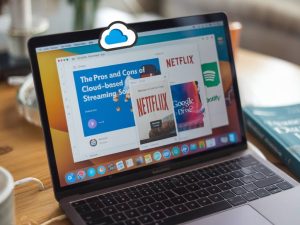How to broadcast sporting events live: equipment and techniques

How to broadcast sporting events live: equipment and techniques
Broadcasting live sporting events can be a thrilling experience, not just for the viewers but also for the producers. However, it requires the right equipment and techniques to ensure a seamless and high-quality broadcast. Whether you’re a seasoned professional or a beginner looking to delve into live sports broadcasting, understanding the essentials can set you up for success. In this article, I’ll break down the necessary equipment and proven techniques to help you broadcast sporting events live, and I’ll explain each component in detail.
Essential Equipment for Live Sports Broadcasting
Investing in the right equipment is paramount to delivering a high-quality live broadcast. Here’s a breakdown of the essential gear you’ll need:
1. Cameras
High-quality cameras are the cornerstone of any live broadcast. For sports, you’ll need cameras that can handle fast action and variable lighting conditions. Here are some options:
- Professional Broadcast Cameras: These cameras offer superior image quality, reliability, and advanced features such as slow-motion capture. Brands like Sony, Canon, and Panasonic are popular choices.
- DSLRs: While not traditionally used for live broadcasts, high-end DSLRs can offer excellent image quality. They can be a more affordable option for smaller productions.
- Action Cameras: For unique angles and on-field perspectives, action cameras like GoPros can add an innovative touch to your broadcast.
2. Lenses
The right lenses can make a significant difference in capturing the dynamic action of sports events. Consider the following:
- Telephoto Lenses: These are essential for close-up shots of the action from a distance. They allow you to capture detailed and intimate moments.
- Wide-Angle Lenses: Useful for capturing wide shots of the entire field or arena, providing context and full coverage of the event.
3. Tripods and Stabilizers
Stable shots are crucial in live sports broadcasting to avoid disorienting your viewers:
- Tripods: Heavy-duty tripods with fluid heads offer smooth panning and tilting, essential for following fast-moving action.
- Gimbals and Stabilizers: These are perfect for on-the-move shots, providing stability and reducing shakiness.
4. Audio Equipment
Clear and high-quality audio enhances the viewer’s experience. Here’s what you might need:
- Microphones: Lavaliers for interviews, shotgun mics for directional sound capture, and ambient mics for crowd noise.
- Audio Mixers: These are essential for balancing and mixing multiple audio sources, ensuring clear and professional sound quality.
5. Switchers
To switch between multiple camera feeds smoothly:
- Hardware Switchers: Devices like the ATEM Mini Pro from Blackmagic Design allow seamless switching between cameras and sources.
- Software Solutions: Programs like vMix and OBS Studio can handle live switching and offer additional features like overlays and graphics.
6. Encoders
Encoders convert your video input into a digital format for streaming:
- Hardware Encoders: Devices like the Teradek VidiU are reliable and often preferred for their dedicated function and robustness.
- Software Encoders: These can be integrated into your streaming platform, like OBS Studio, which is versatile and widely used.
7. Internet Connection
A stable and fast internet connection is critical:
- Wired Ethernet: Always preferred over Wi-Fi to avoid potential interruptions and ensure a stable connection.
- Backup Solutions: Consider having a 4G or 5G backup to switch over in case of network failures.
Techniques for Effective Live Sports Broadcasting
Having the right equipment is only half the battle. Effective broadcasting techniques are essential to capturing and delivering the excitement of live sports.
1. Pre-Event Planning
Thorough planning before the event ensures a smooth broadcast:
- Site Survey: Visit the venue ahead of time to identify camera positions, power sources, and potential obstacles.
- Script and Rundown: Prepare a script or at least a rundown of the event to anticipate key moments and ensure smooth transitions.
- Team Briefing: Ensure all team members, from camera operators to commentators, know their roles and the overall plan.
2. Camera Angles and Placement
Strategic camera placement enhances the viewer’s experience:
- Main Camera: Positioned to provide a wide shot of the entire field, capturing the overall action.
- Secondary Cameras: Placed at key points like behind goals or courtside to offer different perspectives.
- Specialty Cameras: Such as the action cameras mentioned earlier, for unique angles and on-field shots.
3. Live Commentary and Analysis
Engaging commentary can add depth and context to the broadcast:
- Experienced Commentators: Having knowledgeable commentators who can provide insights and engage with the audience is critical.
- Real-Time Analysis Tools: Use tools that allow commentators to draw on-screen or analyze plays in real-time for added engagement.
4. Graphics and Overlays
Graphics enhance the professionalism and informational value of the broadcast:
- Scoreboards: Real-time graphics for scores, statistics, and player information keep viewers informed.
- Lower Thirds: Use these to introduce players, commentators, or provide additional context.
- Replay and Highlight Packages: Integrated graphics packages for instant replays and highlights capture critical moments effectively.
5. Interactivity
Interactivity can significantly increase viewer engagement:
- Live Polls and Q&As: Engaging viewers with live polls or Q&As can make the experience more interactive.
- Social Media Integration: Displaying tweets or comments from viewers during the broadcast increases interaction and feedback.
6. Troubleshooting On-the-Fly
Even with extensive planning, issues can arise during a live broadcast:
- Technical Support: Having a technical support team on standby can quickly resolve issues without disrupting the broadcast.
- Backup Gear: Always keep backup equipment like cameras, mics, and encoders ready to switch out in case of failure.
Post-Event Processes
What happens after the event is just as important as the preparations and the live broadcast:
- Review and Edit: Review the footage to create highlight reels or full-game replays. Editing can enhance viewer experience for those watching the event after it’s live.
- Feedback Analysis: Gather viewer feedback to understand what worked and what didn’t, helping to improve future broadcasts.
- Content Distribution: Distribute the captured content across multiple platforms like YouTube, social media, and broadcast networks to reach a wider audience.
Broadcasting live sporting events is a complex process that requires meticulous planning, reliable equipment, and professional execution. By understanding the essentials covered in this article, you’ll be better prepared to deliver high-quality and engaging live sports broadcasts, captivating your audience and elevating their viewing experience.





